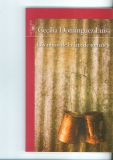New Spanish Books: The online guide of titles from Spanish publishers and literary agents with rights for translation in the UK. To consult titles available in other markets please click on the above links.
LOS NIÑOS DE LA LATA DE TOMATE

On returning from Burkina Faso, Patricia shows her writer friend her travel snaps. The picture of two children who silently approach tourists with a tomato can round their necks and a smile on their faces spurs the writer on to create a story with one of them, Essein, as the main character. In her fiction, Essein is now an adult who returns to his village after working abroad in a cocoa plantation. There he met Ramala, a young woman who serves the overseer of the plantation and bears his mistreatment. Together, fearful, they undertake the journey back to their native land and begin a new life, integrated into village activities.
Judging by the information provided by the Spanish Publisher, the panellist’s initial first impression was that this could be an incredibly original and interesting plot. Lise Jones’ report confirmed their expectations, and from then on it was an easy decision to recommend this title for translation in the UK.
Most people have looked at photographs of unknown people and wondered about the subjects' lives and experiences. This book takes the adage 'A picture is worth a thousand words', and turns it on its head by creating a fiction around an image we never see. A photograph her friend shows her on her return from Burkina Faso inspires the writer. The picture of two boys, begging in the market with tomato cans strung around their necks, fires her imagination and prompts her to create a life story for one of them. This way of working has a noble tradition: collaboration between photographer Horace Bristol and writer John Steinbeck on migrant farm workers in California in the 1930s resulted in the novel The Grapes of Wrath, and many authors have been inspired by found photos, as well as paintings.
In Los Niños de la Lata de Tomate, the writer's vision is backed by extensive research, and we are privy to the process of writing as she discusses her progress with her friend. The stories of the writer and the subject of the photo are interwoven, nicely contrasting the power of images and words. The novel looks at issues on a very human scale, personalising them through fiction, as the characters experience the effects of HIV, female circumcision, religious difference, poverty, famine and economic migration. The resulting narrative has a poetic realism, which is thought provoking and educational without ever preaching to the reader, or patronising the characters. (From the reader Report by Lise Jones)
